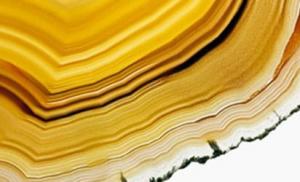Types of groundwater: description, characteristics and features. Typification of groundwater
Determining the depth of groundwater is necessary if you need to find the right place for a well on the site. Groundwater is suitable for drinking and household needs. These waters are more accessible for extraction, since they are located in the initial aquifer from the upper boundary of the earth. The depth of water is very important, since the quantitative parameter of water inflow and the degree of saturation of the soil layer with moisture depend on it. How to determine the depth of groundwater is the topic of the upcoming conversation. We will point out direct and indirect evidence of high water rise, and describe the work process. First, let's find out what groundwater is and how it is characterized.
Classification
Before determining the depth of the water, it is a good idea to find out into what types all the water located underground is divided. That is, you need to know distinctive features each type of water.
All underground waters are divided into 3 main categories: groundwater, interstratal water and perched water. The most superficial of them is perched water. Their formation is due to the filtration of sedimentary moisture (from snow and rain), melt water through the soil layer. Most often, their location is noted at a depth of 1-2 meters from the boundary of the earth. In terms of sanitary and epidemiological requirements, their suitability for drinking is extremely low. To use them, special water treatment is required. That's why they are not used. The amount of their volume is small and often equals the amount of precipitation.
They have reliable protection against contamination. These waters owe their formation to the filtration of water from the surface and, to some extent, of water from natural sources(rivers, ponds, lakes) above the surface of the earth. They lie down without pressure. And permeable sandy loams and loams are saturated with them. This type of water is safe and, in terms of its organoleptic parameters, is very reliable.
The deepest layer (third) is the interstratal pressure (sometimes non-pressure) water layer. These types of waters also have another name - artesian. They are the cleanest and safest from the point of view of epidemiology and radiation. That's why they are valued so highly. In those places where pressure breaks them onto the earth's surface, key sources are located. Such waters are surrounded on each side by impervious layers.
Return to contents
Determination of location
For economic purposes, groundwater is considered most in demand. In one place in natural conditions it has existed for quite a long time. Where it leaks out, springs appear. The volume and level of its rise is quite simple to understand.
But let’s immediately make a reservation that both the first and the second depend on several factors (for example, on atmospheric changes and seasonality).
For example, their temperature and level of elevation are not constant values, but change over time. It is known that they rise higher in rain, and fall lower in dry weather. The level changes very often and in different seasons of the year.
The greatest rise is observed in the spring; in winter the level decreases. The depth of soil freezing is also taken into account. These features are relevant in construction and gardening.
For example, for gardeners, the fact that water is close to the surface will be important, since fruit bushes and trees are not planted in such an area. For such a case, check the level groundwater This is how it is done: they dig a hole one and a half meters deep and wait. If water collects in the depression, then vegetation cannot be planted in this place. Otherwise they root system will be destroyed and the trees will die. The construction of a house also requires a deeper location of groundwater.
The aeration zone is the space between the surface and the water table underground. This distance depends on the terrain, climate conditions, type rocks.
When purchasing land for construction, you must pay attention to the level at which the groundwater is located. Since the close location of such aquifers is fraught with a lot of problems both for the future construction and for the owner himself.
Moreover, determining the location of all communications on the site is much easier than finding out the groundwater level by eye. To do this, it is necessary to do a geodetic examination. Therefore, do not hesitate to ask former owners land similar document. Otherwise you will have to spend extra.
Important: high groundwater most often lies in soils located according to the principle of descent or in areas that are already low relative to the entire village. The close location of the reservoir to your land may also indicate the possible presence of a layer with life-giving moisture close to the surface.
Groundwater is aquifers from 1 to 10 meters thick, located in the depths of the soil. Most often, they serve as sources of moisture for the equipment of wells and wells on the site.
The following groundwaters are distinguished:
- Artesian strata. The lowest layer of an aquifer. As a rule, it is located at a level of 25 meters and below from the surface of the earth. Basically, such water lies between layers of limestone and free-flow veins. Artesian formations are used to equip wells on private property. Such veins do not have a detrimental effect on buildings and vegetation on the site.
- Unconfined groundwater. Such a layer is located at a level of 5 to 20 meters from ground level. Such veins are not subject to changes in water level as a result of seasonal precipitation. The dynamics of such a layer remain unchanged. Due to the free-flow vein, the reservoirs nearby your territory are filled. It is worth knowing that free-flow water has a very harmful influence on the foundation of the finished building and all communications laid underground.
- Verkhovodka. These groundwaters are the most difficult in terms of territory development. Such a layer with liquid is located, as a rule, at a level of up to 3 meters from the ground surface. Upland veins have a very detrimental effect on gardening plantings on the site, and at the same time affect the foundation and communications. Although everything is purely individual for each piece of land.
Formation of “harmful” perched water
Perhaps some are interested in the issue of the formation of the upper water layer. It is worth saying that such veins are formed under the influence of seasonal precipitation. The complex of formation of an aquifer also includes the level of soil freezing and its subsequent heaving. So, the formation of a layer of water looks something like this:
- Soil tends to freeze and shrink as a result of temperature changes. Where the soil freezes and thaws, it becomes looser. Precipitation seeps through it in the form of rain and snow.
- Then the lower layer of soil, not subject to freezing, is compacted over hundreds of years, turning into an impermeable layer. This is the bottom of the aquifer.
- Thus, water accumulates in a kind of chamber, shaping the direction of its movement under the influence of its own force.
- Later, depending on the season, the water will flow down the veins towards the reservoir or seep up the soil to the plants, thus evaporating through their nutrition. That is why in summer, in waterlogged areas, even in the heat, the greens are more juicy and rich.
Negative effects of water on soil
High groundwater levels are a problem that can and should be combated. Otherwise, the costs of maintaining the site will increase significantly.
How are nearby aquifers harmful?
- On loamy, sandy and shale soils, such veins can constantly erode the soil, which will lead to subsidence of the foundation, and subsequently the walls of the house. The final collapse of the entire structure is possible.
- In addition, the above types of soil, under the influence of nearby layers of water, can eventually transform into quicksand. And this is a more complex problem that is almost impossible to cope with.
- All vegetation in the garden and vegetable garden on the purchased territory will simply rot if the groundwater level is too high. In this case, you will have to resort to special tricks such as raising the beds by adding soil. Trees will have to be saved by planting them on special earthen embankments.
Important: you can determine the close water level to the surface of the earth by looking at a building already on the ground. In this case, the house will be distinguished by crumbling plaster in the corners, windows and doors that are difficult to open/close, and cracks in the glass.
All this is evidence that the foundation and the house itself are undergoing deformation as a result negative impact moisture on the foundation.
Determining the water level in the area
The initial assessment of a site for groundwater levels can be carried out, as they say, by eye. To do this, first use the old-fashioned methods and note the vegetation:
- So, if you don’t know how to determine the groundwater level, then pay attention to the bushes and grass on the purchased land. Where groundwater (perched water) is located very close to the surface, nettle, horsetail, coltsfoot, sedge, foxglove, etc. will predominate. That is, all moisture-loving plants. At the same time, at first glance, the area may not seem over-wetted.
- It is worth taking a closer look at the trees and shrubs. If the waters are located on the ground at a depth of up to 5 meters, then you will see reeds, poplar, reeds and other similar plants.
- If the water lies at a level of up to 3 meters, then the common plants here will be wormwood, licorice, etc.
- It is also worth knowing that birch, willow, maple and alder always grow along the aquifers. Moreover, they always tilt towards the vein.
- Oak trees are always located at the intersection of a vein with water.
- You can also determine nearby groundwater by observing insects. Thus, a large concentration of mosquitoes and other flying “evil spirits” is inherent in the places where the vein is located. That is, there is always a ball of insects in the air above it.
- You can simply interview your neighbors and inquire about the water level in their wells and boreholes, as well as about the dynamics of changes in the water surface due to the seasons.
- The groundwater level in the area can be determined mechanically by drilling. To do this, use a simple garden auger to remove the soil by an amount equal to the depth of the water. That is, you need to drill in several places until you hit water. Based on the data obtained, we analyze the depth of aquifers in the ground. In this case, drilling should be carried out exclusively in early spring when the formation rises to its highest level.
Important: nevertheless, the best solution for private property will be a timely geodetic examination. In this way, it will be possible to protect the building from possible problems.
Fighting water
It is known that water in the soil requires action aimed at its elimination. Otherwise, all work on the territory will be in vain. To fight with groundwater you only need a way to remove it. That is, equip good system drainage
- The most common is open drainage. Used when groundwater interferes with plantings. To do this, you need to dig special ditches in the garden for drainage. Their depth should be at least 40 cm, and they should all look towards the slope of the site. In the garden, grooves with a depth of no more than 10-15 cm are dug between crops. This system will do an excellent job of draining water from the garden, but is not perfect. The disadvantage of the system is that caring for the garden is complicated, and the design of the drainage system can be damaged by winds, pets, etc.
- You can simply use the method of reducing water on the ground. To do this, you need to dig a pit through the bottom of which water will flow out. That is, the groundwater level will decrease due to a decrease in the level of the bottom of the pit. But this method is not suitable if soil particles are washed out with water. You can also find out through drilling or geodetic soil analysis.
- Closed drainage system. It is used if the groundwater level interferes with the reliable and durable operation of the building. Such a system for draining water from the territory is hidden from prying eyes, but it has a significant disadvantage - rapid silting. In such a system, the main components are trenches along the entire perimeter of the site, and corrugated pipes with perforations laid in them. Water will fall into the sleeves and go through the pipes to the intended location.
- You can also use a more complex installation to drain water from the ground. A needle-filter system and powerful pumps will be used here. The latter will pump out water and direct it to the drainage system.
- It is believed that there are no areas unsuitable for development. Therefore, if you cannot deal with water for a number of reasons, then it makes sense to change the design of the house so that it is more stable on waterlogged soil. Alternatively, a foundation on piles or a slab foundation can be used.
- If you do decide to carry out geodetic analysis, be prepared for high costs. The cost of performing such work will be within 500 USD. for a plot of land. The amount may vary in both directions depending on the type of soil and the complexity of the terrain.
- If the decision is made to arrange open system drainage, then all work should be carried out in the spring. At this time, the water lies highest, and its removal will be more effective. It is worth knowing that you need to dig trenches from the lowest point of the territory towards the highest.
- For greater ease of installation of the drainage system, you can find pipes on sale, one side of which is made in the form of a grid. This will save you from additional work.
Important: all drainage systems, even on a seemingly perfectly flat piece of land, must be made taking into account the slope towards water drainage. You can find out the direction of the slope by simply assessing the relief or using a geological assessment of the territory.
Classification of groundwater by origin
1) Infiltration - formed due to seepage atmospheric precipitation(usually fresh and cold)
2) Condensation - formed due to the condensation of atmospheric moisture on loose coarse sediments, this process is possible near large bodies of water (usually ultra-fresh and cold)
3) Sedimentation - formed as a result of diagenesis of marine sediments (usually cold and brines)
4) Juvenile or magmatic - enter the earth’s crust from magma (usually hot and thermal)
Physical state of groundwater
1. Vaporous (moves in the voids of rocks from places with greater vapor elasticity to places with lower vapor elasticity).
2. Solid (ice) – found in areas of permafrost
3.1. Strongly connected
a) Crystallization - part of the crystal lattice in the form of H 2 O molecules. Example (CaSO 4 2H 2 O). When heated above 107 0 C, it is released.
b) Constitutional - ions H + and OH - included in the composition of minerals. The release of water is possible when the minerals are completely destroyed.
c) Hygroscopic - a single-molecular film on the surface of particles, adsorbed from the air (density 1.5 g/cm 3, freezing temperature (-78 0 C))
All strongly bound water is not available to plants and is immobile.
3.2. Loose knit
a) The film is held by molecular forces and forms a film on top of the hygroscopic one. The movement occurs from places with a thick film to places with a thin film. This moisture is sedentary and difficult for plants to access.
b) Capillary - moderately accessible moisture for plants, retained by capillary forces
3.3. Gravitational – moves under the influence of gravity in large-porous rocks.
a) Soil water
b) Verkhodka - temporary aquifers, formed in the aeration zone on lenses of waterproof rocks. They are used for rural water supply, are unreliable and often contaminated
c) Groundwater - the first regional aquifer on the first aquifer with a free upper open surface. The groundwater level (GWL) is the level at which water is installed in wells and wells. The groundwater level varies from year to year and seasonally and depends on the amount of precipitation. The distance from the surface to the groundwater level is called the aeration zone. Groundwater is recharged through infiltration of atmospheric precipitation, and discharged into rivers. Groundwater is the source of rural water supply.
d) Interstratal non-pressure waters - lie between two impermeable horizons, without completely filling the entire thickness of the horizon.
e) Artesian pressure water - underground water that has hydrostatic pressure - when the aquifer is opened, the water rises above the roof of the aquifer. The line connecting the marks of the steady pressure level is called the piezometric level. Fresh waters used for central water supply and irrigation.
Classification of groundwater by temperature regime
1) Cold (up to 20 0 C)
2) Warm (20-42 0 C)
3) Hot or thermal (more than 42 0 C)
Classification of groundwater by mineralization
1) fresh (up to 1g/l)
2) salty (1-10g/l)
3) salted (10-50g/l)
4) brines (more than 50g/l)
A significant part of the Earth's water reserves are underground pools that flow through the soil and rock layers. Huge accumulations of underground water - lakes, which wash away rock deposits and soil, forming pits.
The importance of soil fluid is great not only for nature, but also for humans. Therefore, researchers carry out regular hydrological observations of its condition and quantity, and are studying more and more deeply what groundwater is. Definition, classification and other issues of the topic will be discussed in the article.
What is underground water?
Groundwater is water located in the interlayer spaces of rocks located in top layer earth's crust. Such water can be presented in any state of aggregation: liquid, solid and gaseous. Most often, groundwater is tons of flowing liquid. The second most common are blocks of glaciers that have been preserved since the permafrost period.
Classification
The division of groundwater into classes depends on the conditions of their occurrence:
- soil;
- ground;
- interstratal;
- mineral;
- artesian.
Besides listed types, groundwater is divided into classes depending on the level of the layer in which they are located:
- The upper horizon is fresh groundwater. As a rule, their deep location is small: from 25 to 350 m.
- The middle horizon is the location of mineral or saline liquid at a depth of 50 to 600 meters.
- The lower horizon is a depth of 400 to 3000 meters. Water with a high content of minerals.
Groundwater located on great depths, in age it can be young, that is, recently appeared, or relict. The latter could be laid down in underground layers along with the ground rocks in which it was “located.” Or relict underground water was formed from permafrost: the glaciers melted - the liquid accumulated and was preserved.
Soil water
Soil water is a liquid that lies in the upper layer of the earth's crust. It is mainly localized in spatial voids between soil particles.
If you understand what soil type underground water is, it becomes obvious that this type of liquid is the most useful, since its surface location does not deprive it of all minerals and chemical elements. Such water is one of the main sources of “nutrition” for agricultural fields, forest areas and other agricultural crops.
This type of liquid cannot always lie horizontally; its outlines are often similar to the topography of the soil. In the upper layer of the earth's crust, moisture does not have a “solid support”, so it is in a suspended state.
Excessive amounts of soil water are observed in the spring when the snow melts.
Groundwater
The ground variety is water that is located at some depths of the upper layer of the earth. The depth of liquid flow can be greater if it is an arid area or desert. At temperate climate With periodic, constant precipitation, groundwater does not lie so deep. And with excess rain or snow, ground liquid can lead to flooding of the area. In some places, this type of water comes to the surface of the soil and is called a spring, spring or source.
Groundwater is replenished due to precipitation. Many people confuse it with artesian, but the latter lies deeper.
Excessive fluid may accumulate in one area. As a result of the standing position, swamps, lakes, etc. are formed from groundwater.
Interlayer
What is interstratal groundwater? These are, in fact, the same aquifers as ground and soil aquifers, but only their level of flow is deeper than that of the previous two.
A positive feature of interlayer fluids is that they are much cleaner because they lie deeper. In addition, their composition and quantity always fluctuates within one constant limit, and if changes occur, they are insignificant.
Artesian
Artesian waters are located at depths exceeding 100 meters and reaching 1 km. This variety is considered, and indeed is, the most suitable for human consumption. Therefore, in suburban areas, drilling underground wells is often practiced as a source of water supply for residential buildings.
When drilling a well, artesian water rushes to the surface like a fountain, since it is a pressure type of groundwater. It lies in the voids of rocks between water-resistant layers of the earth's crust.
The guidelines for the extraction of artesian water are certain natural objects located on the surface: depressions, flexures, troughs.
Mineral
Mineral ones are the deepest and most healing and valuable for human health. They contain a high content of various mineral elements, the concentration of which is constant.
Mineral waters also have their own classifications:
By purpose:
- dining room;
- medicinal;
- mixed.
According to the predominance of chemical elements:
- hydrogen sulfide;
- carbon dioxide;
- glandular;
- iodine;
- bromine
According to the degree of mineralization: from fresh to waters with the highest concentration.
Classification by purpose
Groundwater is used in human life. Their purpose varies:
- drinking water is water that is suitable for consumption either in its natural, untouched form, or after purification;
- technical is a liquid that is used in various technological, economic or industrial sectors.
Classification by chemical composition
On chemical composition groundwater is affected by those rocks that are adjacent to moisture. The following categories are distinguished:
- Fresh.
- Low mineralized.
- Mineralized.
As a rule, waters lying in close proximity to the earth's surface are freshwater. And the deeper the moisture is, the more mineralized its composition.
How was groundwater formed?
Several factors influence the formation of groundwater.
- Precipitation. Precipitation in the form of rain or snow is absorbed by the soil in the amount of 20% of the total amount. They form soil or ground fluid. In addition, these two categories of moisture participate in the water cycle in nature.
- Melting of permafrost glaciers. Groundwater forms entire lakes.
- There are also juvenile fluids that formed in solidified magma. This is a type of primary water.
Groundwater monitoring
Monitoring of groundwater is an important necessity, which allows you to track not only its quality, but also its quantity, and in general, its presence.
If the quality of water is examined in a laboratory by examining a sample taken, then exploration of its presence involves the following methods, interconnected with each other:
- First, the area is assessed for the presence of suspected groundwater.
- Secondly, it is measured temperature indicators detected liquid.
- Next, the radon method is used.
- Afterwards, base wells are drilled, followed by core removal.
- The selected core is sent for research: its age, thickness and composition are determined.
- A certain amount of groundwater is pumped from wells to determine its characteristics.
- Based on the base wells, liquid occurrence maps are drawn up and its quality and condition are assessed.
Groundwater exploration is divided into the following types:
- Preliminary.
- Detailed.
- Operational.
Pollution problems
The problem of groundwater pollution is very relevant today. Scientists identify the following methods of pollution:
- Chemical. This type of pollution is very common. Its globality depends on the fact that on Earth there is a huge amount of agricultural and industrial enterprises, which discharge their waste in liquid and solid (crystallized) form. This waste very quickly penetrates into water-bearing horizons.
- Biological. Contaminated wastewater from domestic use, faulty sewers - all these are causes of contamination of groundwater by pathogens.
Classification by type of water-saturated soils
The following are distinguished:
- porous, that is, those that have settled in the sands;
- cracked, those that fill the cavities of blocks of rocks and rocks;
- karst, those located in limestone rocks or other brittle rocks.
Depending on the location, the composition of the water is formed.
Reserves
Groundwater is regarded as a mineral resource that is renewable and participates in the water cycle in nature. The total reserves of this type of minerals amount to 60 million km 3. But, despite the fact that the indicators are not small, groundwater is subject to pollution, and this significantly affects the quality of the liquid consumed.
Conclusion
Rivers, lakes, groundwater, glaciers, swamps, seas, oceans - all these are the Earth's water reserves, which are interconnected in one way or another. Moisture located in the soil layers not only forms an underground pool, but also affects the formation of surface reservoirs.
Groundwater is suitable for people to drink, therefore saving it from pollution is one of the main tasks of humanity.
Groundwater - first from earth's surface, sustained in distribution, an aquifer located on the first aquifer from the surface. Aquifers are porous sedimentary rocks (sands, sandy loams, loams), fractured dense sedimentary or halogen rocks; waterproof (waterproof) - clays and dense sedimentary or hypogene massive rocks. There are also relative aquicludes with low water permeability, over which water can accumulate.
The areas of recharge and distribution of groundwater usually coincide. With a level bedding of aquitards, relatively thick aquifers can form; with a concave bedding, a groundwater pool is formed, and with an inclined bedding, their flows can arise.
The space between the earth's surface and the groundwater horizon is called the aeration zone. It contains moisture that saturates the capillary pores and has no connection with groundwater, which is called suspended (capillary) moisture, characteristic of soils. In the aeration zone, perched waters are often found - aquifers of small thickness and length located above aquitards. In addition to gravitational (free) and capillary moisture, there are sorbed, film (thin films several molecules thick) and loosely bound (thick water films around soil particles) moisture.
Sorbed and film moisture is inaccessible to plants due to its strong connection with soils; other forms are available. The mobility of moisture increases as its adhesion to particles weakens: sorbed moisture is almost immobile, film moisture is capable of slow movement under the influence of gravity. The moisture of the aeration zone and groundwater is dynamic: it evaporates, condenses, infiltrates, moving in the form of films, through capillaries, in the form of a ground flow, freezes and thaws. Depending on the influx or decrease of moisture, the groundwater level and the volumes of other forms of moisture fluctuate, and some forms transform into others.
Groundwater is formed mainly as a result of the infiltration of rain and melt water, which occurs frontally only on sandy rocks, or through so-called windows, usually confined to depressions in the relief. In porous rocks, when temperatures fluctuate, a small amount of moisture (no more than 10–15%) is formed as a result of condensation from underground air. In some areas, groundwater can be of flow origin (inflow from the side) and deep - when rising (outpouring) from the depths of groundwater. Groundwater outlets to the surface in depressions of the relief or on slopes are called sources (springs, springs).
Close to the surface, groundwater is located in river valleys, where it can be very thick in thick sandy deposits. Distribution, proximity to the surface, and groundwater reserves increase with an increase in annual precipitation, a decrease in evaporation and outflow, and the presence of porous water-bearing rocks and good aquitards. On the contrary, a decrease in precipitation and increased drainage of the area are the main factors for lowering (deepening) the groundwater level and reducing its reserves.
The suitability of groundwater for water supply and use by animals is limited mainly by the amount of dissolved organic matter(swamp waters), salinity and anthropogenic pollution.
The map is based on the following hierarchy of groundwater characteristics.
The main characteristic of groundwater is the depth of groundwater from the earth's surface, shown in color. Depth determines their role in nature; it reflects the climatic and geological-geomorphological conditions of their formation, the processes of leaching of mobile components from rocks, evaporative concentration, the genesis and dynamics of groundwater.
Mineralization and chemistry of groundwater are shown together with shading and icons. They are determined by the quantity, salinity of rocks, evaporation, and the duration of the migration path.
Groundwater is also distinguished according to the degree of acidity and oxygen-gley content, which is determined by the presence of oxygen in the water and is associated with the intensity of water exchange (from intensive to stagnant), the abundance of decomposing organic matter, and the activity of microorganisms.
Groundwater is divided according to its phase state as follows: in non-permafrost areas, permanently liquid groundwater is common, in areas of continuous permafrost - seasonally melted water, in areas of isolated permafrost with taliks - predominantly seasonally melted water, in areas of island permafrost, permanently liquid water predominates, but there are also seasonal meltwaters.
Further, the forms of groundwater are distinguished according to their host rocks and relief conditions: on the plains, loose sedimentary rocks with formation waters located in them predominate; In the mountains, dense rocks with fissure waters predominate; formation waters are also found in deluvial deposits.
Groundwater contours with various properties waters are united into 12 provinces, which reflect natural zoning groundwater. The degree of drainage of the territory is superimposed on the zonal patterns. Groundwater mountain systems non-permafrost areas are azonal.













